Baby swings are a popular item for parents to have in their homes. They provide a comfortable and soothing place for babies to rest and play. However, as with any baby gear, there are age limits and safety considerations that need to be taken into account.
Understanding Baby Swings Baby swings are designed to mimic the motion of being rocked or swung, which can be soothing for babies. They come in a variety of styles and sizes, from simple models that swing back and forth to more elaborate ones that vibrate, play music, and have multiple swing settings. While they can be a helpful tool for parents, it’s important to understand the age limits and safety measures for using them.
Age Limit for Baby Swings Most baby swings are designed for use from birth up to around six months of age or until the baby can sit up unassisted. After this point, the baby may be too big or too active for the swing, which can be dangerous. It’s important to follow the manufacturer’s recommendations for weight limits and size considerations to ensure that the baby is safe and comfortable while using the swing.
Key Takeaways
- Baby swings are a popular item for parents, but there are age limits and safety considerations that need to be taken into account.
- Most baby swings are designed for use from birth up to around six months of age or until the baby can sit up unassisted.
- It’s important to follow the manufacturer’s recommendations for weight limits and size considerations to ensure that the baby is safe and comfortable while using the swing.
Understanding Baby Swings
A baby swing is a device designed to provide a soothing and calming motion for infants. It is a popular baby gear item that helps parents to calm their babies and keep them entertained. Baby swings are typically used for infants between the ages of 0-6 months, but some models can accommodate babies up to 12 months old.
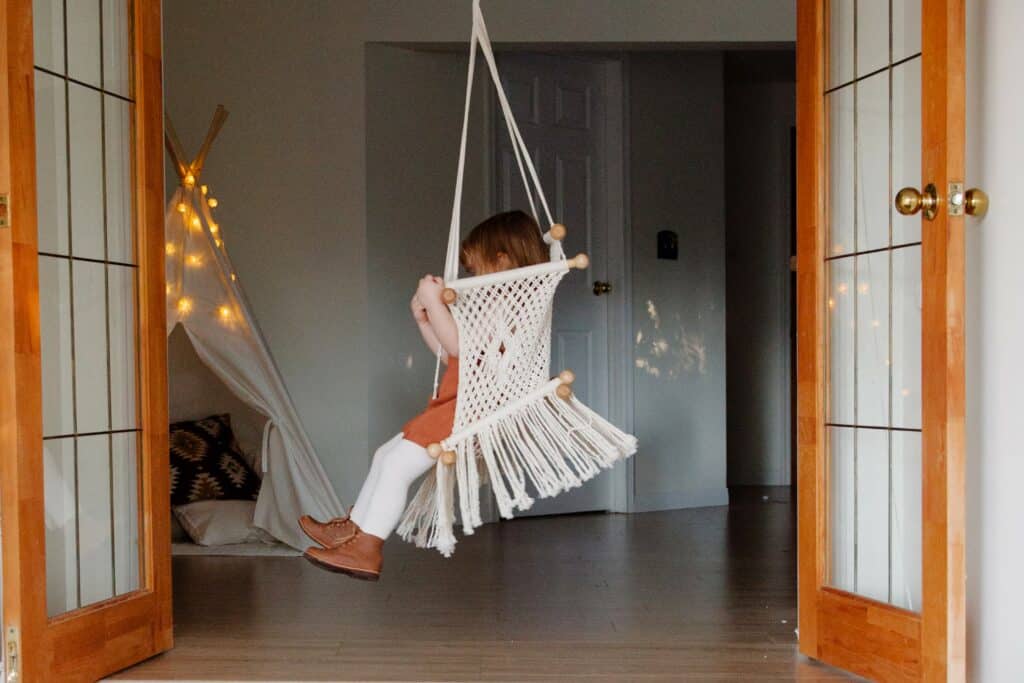
What is a Baby Swing?
A baby swing is a device that imitates the motion of a mother’s womb or a parent’s arms. It provides a gentle back-and-forth movement that can help soothe and calm fussy babies. Baby swings come in different types, including full-size swings, portable swings, and hybrid swings.
Different Types of Baby Swings
Full-size swings are larger and come with more features, such as music, toys, and different swing speeds. Portable swings, on the other hand, are smaller and more lightweight, making them ideal for travel and small spaces. Hybrid swings combine the features of both full-size and portable swings.
Features of Baby Swings
Baby swings come with different features, including:
- Swing speed settings: Baby swings can have up to six swing speed settings, allowing parents to choose the most comfortable speed for their baby.
- Music and sounds: Some baby swings come with built-in music and sounds that can help soothe and entertain babies.
- Toy bar: A toy bar is a feature that comes with some baby swings. It provides a place for toys that can keep the baby entertained.
- Reclining seat: A reclining seat allows parents to adjust the swing’s angle, making it more comfortable for their baby.
- Safety features: Baby swings come with safety features such as a five-point harness, non-slip feet, and a sturdy frame to ensure the baby’s safety.
Conclusion
Understanding baby swings is essential for parents who want to provide a comfortable and safe environment for their babies. With different types and features, parents can choose the best baby swing that suits their needs and preferences.
Age Limit for Baby Swings
When it comes to baby swings, age limit is an important factor to consider. While these swings can provide a comfortable and soothing experience for infants, it is important to use them within the recommended age range to ensure safety and prevent any potential injuries.
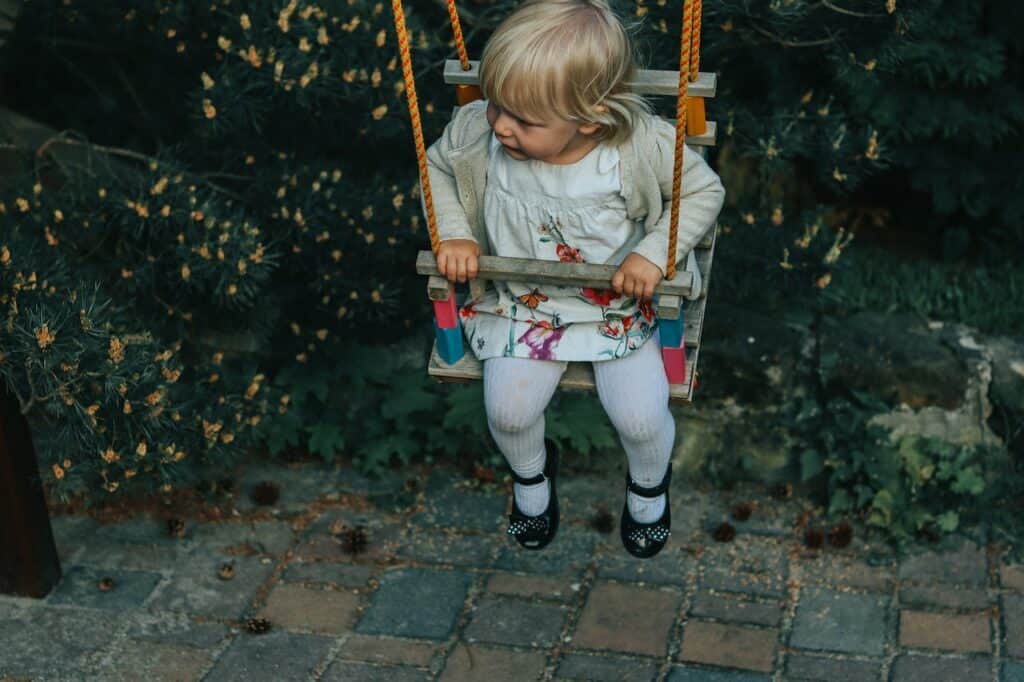
Most baby swings have an age limit of six months or less. This is because as babies grow and develop, they become more mobile and may be at risk of falling out of the swing or getting stuck in an uncomfortable position. It is important to follow the manufacturer’s instructions and guidelines when it comes to age limit, as well as weight limit and other safety considerations.
Parents should also be aware that there are different types of baby swings, each with their own age range and safety considerations. For example, some swings are designed specifically for newborns and have a reclined position, while others are meant for older babies who can sit up on their own. It is important to choose a swing that is appropriate for your baby’s age and developmental stage.
In addition to age limit, parents should also consider other safety factors when using a baby swing, such as ensuring that the swing is properly assembled and secured, and never leaving their baby unattended while in the swing. By following these guidelines and using a baby swing within the recommended age range, parents can provide a safe and comfortable experience for their little one.
Safety Measures for Using Baby Swings
When using a baby swing, it is crucial to take necessary safety measures to ensure that the baby is safe and secure. Here are some safety tips to keep in mind:
Use a Safety Harness
Make sure that the baby is always strapped in using the safety harness that comes with the swing. A five-point harness is the safest option as it secures the baby’s shoulders, waist, and between the legs. This prevents the baby from slipping out or falling off the swing.
Follow Age and Weight Limits
Always follow the age and weight limits specified by the manufacturer. Using the swing beyond these limits can be dangerous and cause injury to the baby.
Place the Swing on a Flat Surface
Ensure that the swing is placed on a flat and stable surface. Avoid placing it on an uneven surface that can cause the swing to tip over.
Keep an Eye on the Baby
Never leave the baby unattended while in the swing. Keep an eye on the baby at all times and make sure that the swing is within your sight.
Caution with Toys and Accessories
Avoid hanging toys or accessories on the swing that are not recommended by the manufacturer. These can be a choking hazard or cause injury to the baby.
By following these safety measures, parents can ensure that their baby is safe and secure while using a baby swing.
Weight Limits and Size Considerations
When choosing a baby swing, it is important to consider the weight limit and size of the swing. Most baby swings have a weight limit of around 25 to 30 pounds, although some swings can accommodate up to 40 pounds. It is important to follow the weight limit guidelines provided by the manufacturer to ensure the safety of your child.
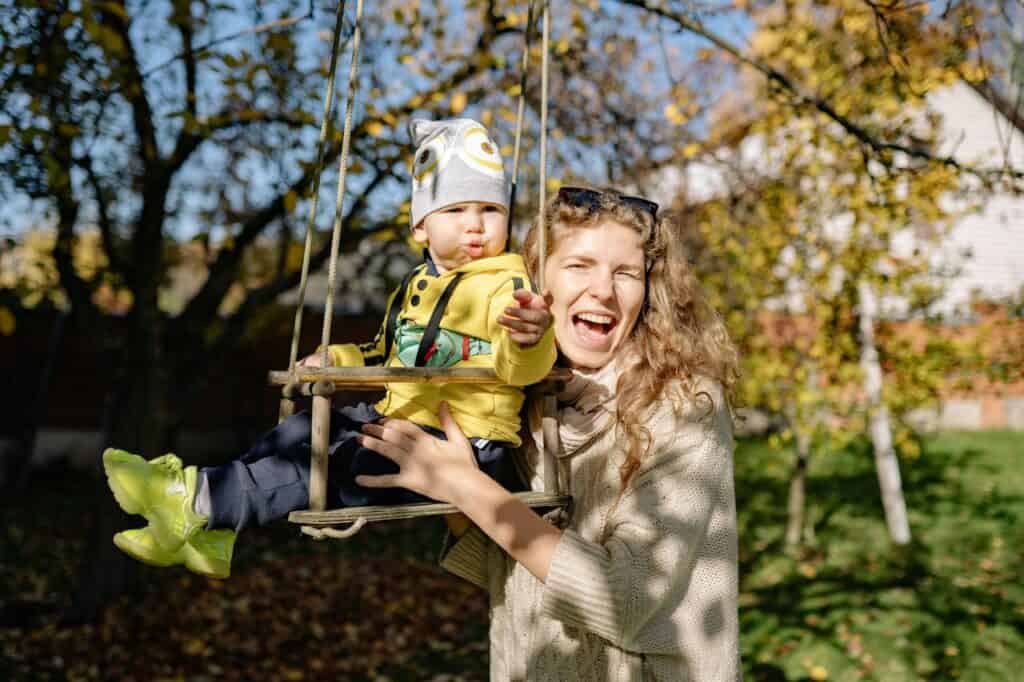
In addition to weight limits, it is also important to consider the size of the swing. Some swings are designed for smaller infants and may not be suitable for larger babies. It is important to check the dimensions of the swing and ensure that it is appropriate for your child’s size.
When selecting a swing, it is important to consider both the weight limit and size of the swing to ensure that it is safe and comfortable for your child.
Comfort and Support in Baby Swings
When it comes to baby swings, comfort and support are two important factors to consider. A comfortable swing can help your baby relax and fall asleep, while proper support ensures they are safe and secure.
One aspect of comfort in a baby swing is the head support. A swing with a headrest or adjustable head support can help keep your baby’s head from flopping around, which can be uncomfortable and potentially dangerous. Additionally, a reclining seat can provide extra comfort and support for your baby’s back and neck.
Another important factor to consider is the overall comfort of the swing. Soft, padded seats can help your baby feel cozy and relaxed, while adjustable straps and harnesses can keep them secure without being too tight or uncomfortable.
It’s also important to note that the age and size of your baby can affect the level of comfort and support they need in a swing. Newborns may require more head and neck support, while older babies may prefer a more upright position.
Overall, when choosing a baby swing, it’s important to consider the level of comfort and support it provides to ensure your baby is safe and content while using it.
Different Types of Baby Swings
There are various types of baby swings available in the market to choose from. Each type has its own set of features and benefits. Here are some of the most common types of baby swings:
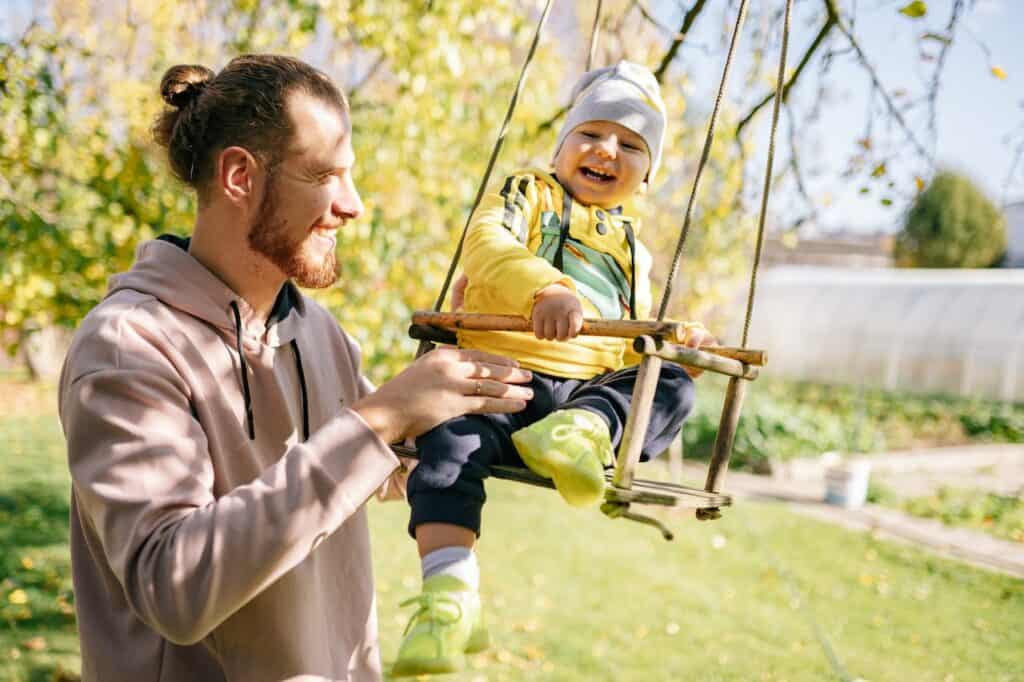
Electric Baby Swings
Electric baby swings are powered by electricity and are designed to provide a smooth and consistent swinging motion. They come with various speed settings and can be easily adjusted according to the baby’s preference. Most electric baby swings also come with built-in music and sounds to soothe the baby.
Battery-Operated Baby Swings
Battery-operated baby swings are similar to electric baby swings, but they are powered by batteries. They are more portable than electric baby swings and can be easily moved from one room to another. However, they may not provide a consistent swinging motion as the batteries start to lose power.
Mobile Baby Swings
Mobile baby swings come with a detachable mobile that hangs above the baby’s head. The mobile usually has toys or plush animals attached to it, which can keep the baby entertained while swinging. Some mobile baby swings also come with a built-in music player.
4moms Mamaroo
4moms Mamaroo is a high-tech baby swing that uses advanced technology to mimic the natural motion of parents. It comes with five unique motions, including car ride, kangaroo, tree swing, rock-a-bye, and wave. The swing also has built-in sounds and an MP3 plug-in, allowing parents to play their own music.
Overall, the type of baby swing that parents choose will depend on their needs and preferences. It is important to consider factors such as portability, power source, and additional features when selecting a baby swing.
Additional Features in Baby Swings
Aside from the basic features of a baby swing, there are additional features that can enhance the overall experience for both the baby and the caregiver. These features can provide added comfort, entertainment, and stimulation for the baby.
Mobiles
Mobiles are a common feature in baby swings. They are designed to hang above the baby’s head and can provide visual stimulation. Some mobiles come with toys or objects that rotate and move, while others may feature lights or colors.
Music and Nature Sounds
Many baby swings come with built-in music or nature sounds. These can be soothing for the baby and can help them relax and fall asleep. Some swings may even have the option to connect to an external device, such as a smartphone or MP3 player, to play custom music or sounds.
White Noise
White noise is a type of sound that can help drown out other noises and create a peaceful environment for the baby. Some baby swings come with built-in white noise options, such as the sound of a fan or a gentle hum.
Toy Bar
A toy bar is a feature that attaches to the top of the swing and provides toys or objects for the baby to play with. These toys can help stimulate the baby’s senses and provide entertainment.
Speed Settings
Most baby swings come with multiple speed settings, which allow the caregiver to adjust the speed of the swinging motion. This feature can be helpful for finding the right speed to soothe the baby.
Mirror
Some baby swings come with a mirror attached to the swing. This feature can provide visual stimulation for the baby and can also help them develop their sense of self-awareness.
Overall, these additional features can enhance the overall experience of using a baby swing. Caregivers should consider their individual needs and preferences when choosing a swing with these features.
When to Stop Using a Baby Swing
Baby swings can be a lifesaver for parents who need to keep their little ones entertained and soothed. However, there comes a time when a baby swing is no longer appropriate for a child’s age and development. Knowing when to stop using a baby swing is important for the safety and well-being of the child.
Most baby swings have a weight limit and age range specified by the manufacturer. Parents should follow these guidelines to ensure that their child is safe and comfortable while using the swing. Once a child reaches the maximum weight or age limit, it is time to stop using the swing.
In addition to weight and age limits, parents should also consider their child’s developmental milestones. Once a child can sit up on their own, they may no longer need the support of a baby swing. Similarly, once a child starts crawling or attempting to climb out of the swing, it is time to stop using it.
It is important to note that every child develops at their own pace, so parents should use their best judgement when deciding when to stop using a baby swing. If a child seems uncomfortable or unhappy in the swing, it may be time to transition to other forms of entertainment and soothing.
In summary, parents should follow the weight and age limits specified by the manufacturer and consider their child’s developmental milestones when deciding when to stop using a baby swing. By doing so, parents can ensure that their child is safe and comfortable while using the swing.
Choosing the Best Baby Swing
When it comes to choosing the best baby swing, parents have a lot of options to consider. From price to features, there are many factors to take into account to ensure that the baby swing is the right fit for both the parent and the baby.
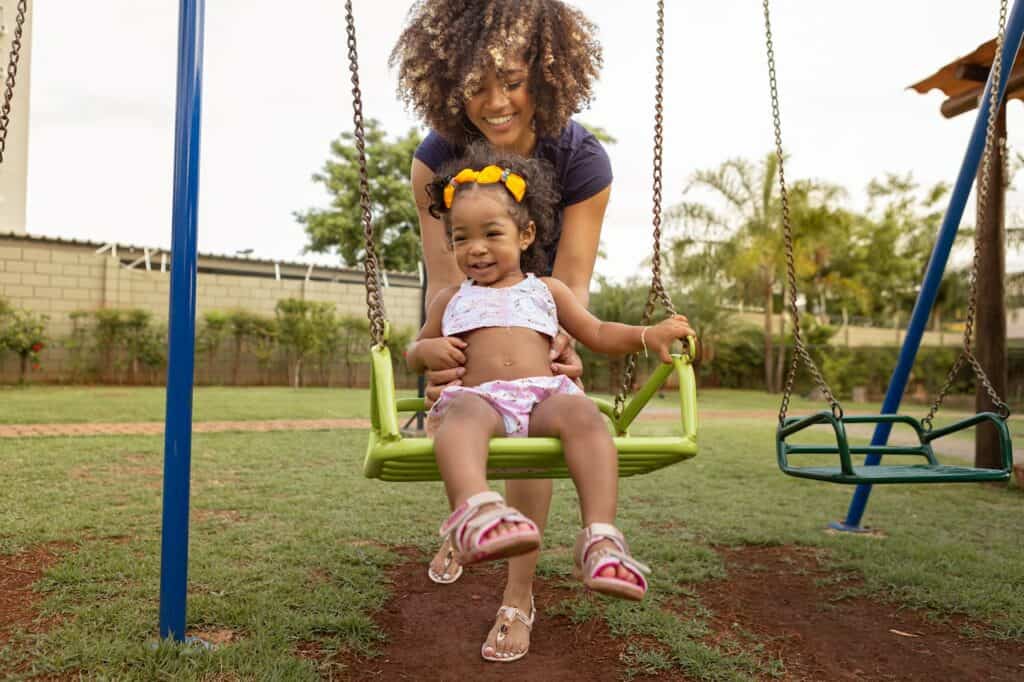
One of the first things to consider when choosing a baby swing is the age limit. Some baby swings are designed for newborns, while others are better suited for older babies. It is important to choose a baby swing that is appropriate for the baby’s age and weight to ensure their safety.
Another important factor to consider is the swing’s features. Some baby swings come with a variety of options, such as different swing speeds, music, and toys, while others are more basic. Parents should consider what features are important to them and their baby before making a purchase.
Price is also an important consideration when choosing a baby swing. While some swings can be quite expensive, there are also many budget-friendly options available. Parents should consider their budget and what features are most important to them when making a decision.
Amazon is a great resource for finding the best baby swings. With a wide variety of options and competitive pricing, Amazon makes it easy for parents to find the perfect baby swing for their needs.
In summary, when choosing the best baby swing, parents should consider the age limit, features, price, and options available on Amazon. By taking these factors into account, parents can make an informed decision and find the perfect baby swing for their little one.
Professional Advice and Testing
When it comes to determining the age limit for baby swings, it’s important to seek out professional advice from sources such as the American Academy of Pediatrics or a trusted pediatrician. These professionals can offer guidance on the appropriate age range for a baby swing based on a child’s physical development and safety considerations.
In addition to seeking out professional advice, it’s also important to look for baby swings that have undergone rigorous testing to ensure their safety and reliability. Some baby swings may be tested by independent organizations, while others may be tested by the manufacturer themselves. Regardless of who conducted the testing, it’s important to look for a swing that has passed all necessary safety tests and meets industry standards.
It’s also important to carefully read and follow the instruction manual that comes with the baby swing. The manual will provide important information on the recommended age range for the swing, as well as any safety precautions that should be taken. Following the instructions closely can help ensure that the baby swing is used safely and effectively.
Overall, when it comes to determining the appropriate age range for a baby swing, it’s important to seek out professional advice, look for a swing that has undergone rigorous testing, and carefully follow the manufacturer’s instructions. By taking these steps, parents can help ensure that their child is safe and comfortable while using a baby swing.
Other Considerations and Tips
When using baby swings, there are a few other considerations and tips to keep in mind to ensure the safety and comfort of your child.
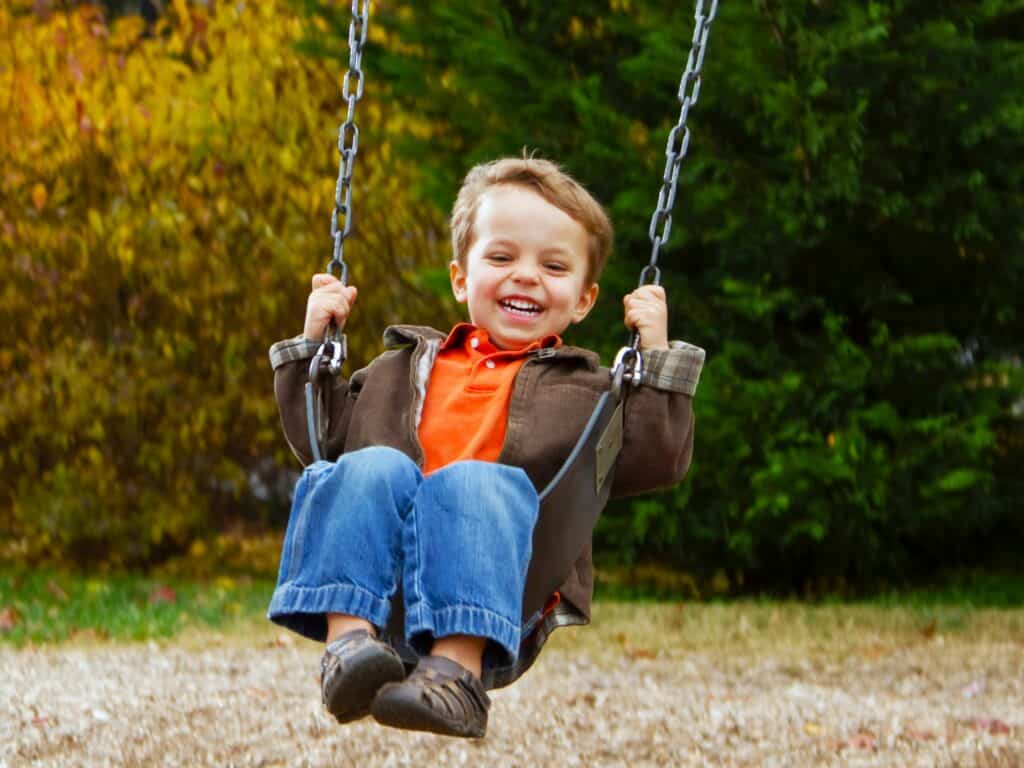
Firstly, it’s important to consider the room where the swing will be placed. Make sure there is enough space for the swing to move back and forth without hitting any walls or furniture. Additionally, ensure that the room is well-ventilated and not too hot or cold for your baby.
Portability is another factor to consider when choosing a baby swing. If you plan to move the swing from room to room or take it with you on trips, look for a lightweight and compact option that is easy to fold and store.
When it comes to stability, make sure the swing has a sturdy frame and a wide base to prevent tipping. Always place the swing on a flat surface and avoid using it on an uneven or inclined surface.
It’s important to never leave your baby unsupervised in the swing, even for a short period. Always stay within arm’s reach and keep an eye on your baby to ensure they are safe and comfortable.
Finally, always follow the manufacturer’s instructions for assembly, use, and maintenance of the swing. Regularly check the swing for any signs of wear and tear, and replace any worn or damaged parts immediately.
By keeping these tips and considerations in mind, you can ensure that your baby enjoys the benefits of a baby swing safely and comfortably.
Related post: Exersaucer Age Limit
Frequently Asked Questions
What is the maximum weight for a baby swing?
The maximum weight limit for a baby swing varies between brands and models. Generally, most baby swings can hold up to 25-30 pounds. It is important to always check the manufacturer’s instructions for the specific weight limit of your baby swing.
How long can a baby use a Graco swing?
Graco swings can be used for infants up to 30 pounds, or until they can sit up unassisted. It is important to always follow the manufacturer’s instructions for the specific weight and age limits of your Graco swing.
What is the weight limit for the Fisher-Price swing?
The weight limit for Fisher-Price swings varies between models. However, most Fisher-Price swings can hold up to 25-30 pounds. It is important to always check the manufacturer’s instructions for the specific weight limit of your Fisher-Price swing.
When should you stop using a baby swing?
It is recommended to stop using a baby swing once your baby can sit up unassisted or exceeds the weight limit specified by the manufacturer. Additionally, it is important to always follow the manufacturer’s instructions for the specific age and weight limits of your baby swing.
How to put a baby in a park swing?
When putting a baby in a park swing, make sure to secure them with the swing’s safety straps. Hold your baby securely with one arm while using your other hand to fasten the straps. Make sure the straps are snug but not too tight and always supervise your baby while they are in the swing.
At what age can a baby go in a swing at the park?
Babies can generally go in a park swing once they can sit up unassisted, which is usually around 6 months old. However, it is important to always supervise your baby while they are in the swing and follow any age or weight limits specified by the manufacturer.

Iesha is a loving mother of 2 beautiful children. She’s an active parent who enjoys indoor and outdoor adventures with her family. Her mission is to share practical and realistic parenting advice to help the parenting community becoming stronger.
